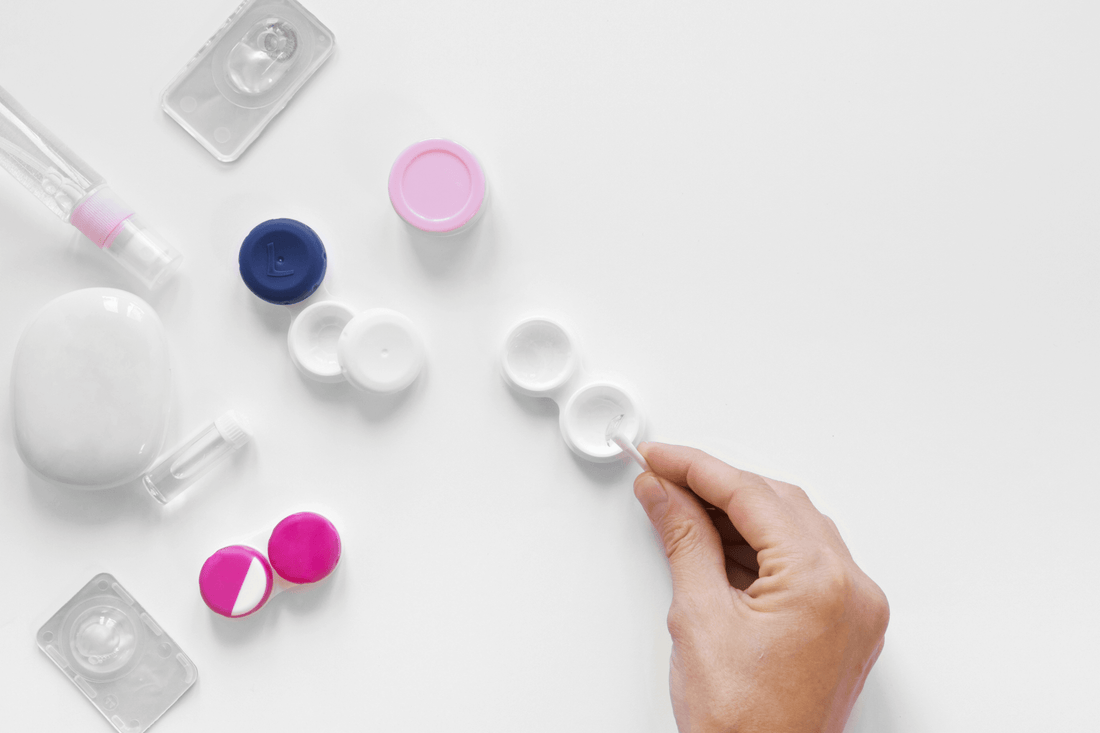Whether you are currently wearing or plan to try contact lenses, understanding the best practices for contact lens maintenance is crucial. Proper lens care ensures optimal vision clarity and reduces the risk of eye complications. With a variety of contact lens solutions available for both soft and hard contact lenses, it's important to choose the right lens cleaning routine that suits your eye care needs.
In this blog, we’ll explore the evolution of contact lens cleaning to help you find your ideal solution.
Physical Heat Disinfection
Initially, heat disinfection was used, involving boiling lenses in a saline solution within a high-temperature-resistant bottle. Most pathogens are eliminated at 70-80°C, a range that lens materials can withstand.
However, this method can cause lens deformation, yellowing, and accelerated aging. It may also denature tear proteins on the lenses, leading to inflammation.
Chemical Cold Disinfection
This method uses chemical disinfectants to destroy pathogens. Introduced as an alternative to heat disinfection, chemical cold disinfection comes in two forms: oxidation system care and non-oxidation system care.
Oxidation System Care
In oxidation system care, products containing hydrogen peroxide are primarily used. Due to their powerful efficacy and relative convenience, hydrogen peroxide care solutions were introduced in the early 1970s and became widely used as lens care methods in the 1980s.
Two-Step Method (Neutralization Method): Initially, clean and rinse the lenses, then immerse them in a specialized solution overnight for at least 6 hours, incorporating a tablet coated with an anti-solvent. Following adequate disinfection, the anti-solvent coating dissolves, initiating the neutralization of hydrogen peroxide. The solution’s color transition from red during disinfection to blue post-neutralization signals readiness. Before use, ensure lenses are thoroughly rinsed with a care solution.
One-Step Method (Catalysis Method): More commonly preferred, this method involves placing the lenses and a platinum ring into a hydrogen peroxide solution for a minimum of 6 hours. The platinum facilitates the hydrogen peroxide's decomposition, offering simultaneous disinfection and breakdown of the peroxide.
Modern hydrogen peroxide care solutions feature built-in neutralizing agents, streamlining the process by removing the need for manual neutralization. Once the disinfection and neutralization phases are complete, the lenses are safe for wear. Being a potent disinfectant, hydrogen peroxide eliminates the necessity for preservatives, making it an ideal choice for individuals with preservative allergies.
Despite its benefits, the method does have drawbacks: the risk of eye damage from direct hydrogen peroxide contact necessitates a lengthy neutralization period, and its efficiency in removing tear protein deposits may be limited.
Non-Oxidation System Care
Since 1988, multi-purpose solutions featuring non-oxidizing antibiotics have become increasingly popular.
For effective use of multi-purpose solutions, start by washing your hands thoroughly. Then, gently rub each side of the lenses with your fingertip for at least 20 seconds, and soak the lenses fully in the solution for 6-8 hours. Upon removal, ensure the lenses are rinsed well with clean saline solution or the same multi-purpose solution before wearing. This is a common method of disinfection and care for contact lenses today.
However, multi-purpose solution carries the risk of chemical components permeating the lenses, potentially causing discomfort for sensitive eyes. The risk of lens damage is heightened by frequent rubbing and the challenge of applying the correct amount of pressure
Device-Assisted Care Methods
Ultrasonic Cleaning Device
Ultrasonic cleaning devices theoretically harness the vibrational properties of sound waves to remove impurities like lipids and protein deposits from the surface of contact lenses. However, literature on the effectiveness of this method is limited. Among the sparse reports, one indicates a moderate level of disinfection, yet there's little evidence concerning its ability to remove proteins effectively. Moreover, the continuous impact of bubbles generated during the ultrasonic cleaning process may potentially damage the optical surface of the lens, or even cause lens rupture. This means that despite appearing clean, the lens might be damaged, rendering it unusable.
ReO2 Contact Lens Cleaner
Discover the revolutionary ReO2 contact lens cleaner, powered by patented Elepy technology.
 ReO2 leverages electrophoresis, setting a new standard in contact lens maintenance by efficiently breaking down and removing tear proteins through electrolysis. Achieving an impressive 94.7% protein removal rate, ReO2 also generates hypochlorous acid, ensuring rapid sterilization and eliminating 99.999% of bacteria in just 3 minutes. Beyond its exceptional cleaning performance, ReO2 is distinguished by its FDA 510(k) clearance, which attests to its safety and effectiveness after rigorous testing.
ReO2 leverages electrophoresis, setting a new standard in contact lens maintenance by efficiently breaking down and removing tear proteins through electrolysis. Achieving an impressive 94.7% protein removal rate, ReO2 also generates hypochlorous acid, ensuring rapid sterilization and eliminating 99.999% of bacteria in just 3 minutes. Beyond its exceptional cleaning performance, ReO2 is distinguished by its FDA 510(k) clearance, which attests to its safety and effectiveness after rigorous testing.
Conclusion
Choosing the right contact lens care method is vital for maintaining your vision health and ensuring the longevity of your lenses. With the introduction of the ReO2 contact lens cleaner, lens wearers now have access to a state-of-the-art solution that offers unmatched cleanliness and safety. Its innovative technology sets a new standard in lens care, promising users a future where eye discomfort and infections are significantly reduced.


